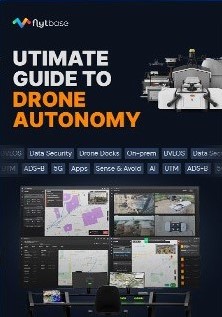Headquartered in Oostkamp, Belgium, Citymesh is a pioneer of wireless connectivity with fifteen years of experience in high-end network design, installation, and maintenance.
Through the combination of various technologies including 5G, Wi-Fi, smart sensors, and data visualization, they provide B2B smart infrastructure and innovative solutions in a variety of markets that are tailored to the needs of their clients. They specialize in private 5G services and play a key role in setting up wireless networks in (smart) cities, at events, (air)ports, industrial facilities, and warehouses.
Why Genk is Using Smart Tech to Improve Emergency Response
Rapid response in the face of crises and life-threatening situations, such as fires and incidents, is critical for city officials all over the world. Fire departments across nations are implementing new technologies to improve operations and save lives. Drones are one such valuable tool that has assisted firefighters in improving situational awareness. The imaging technology, software and accessories on board the drone enables the emergency services to gather information more quickly and efficiently in the event of an incident. Some of the major challenges that drones are able to solve include:
- Incorrect Initial Report of Incident: The emergency services often receive distress calls, either from a bystander at the scene of the incident that does not fully or sometimes even incorrectly describes the incident or from an automated fire alarm. The emergency services dispatcher allocates resources based on the report, only to discover that they are insufficient in scale and/or type for the actual incident. Response time is critical. Any delay in responding to the incident effectively could result in fatalities or additional infrastructure damage. A local drone team needs time to drive to the scene, get the drone ready and start flying.
- Lack of Real-time Awareness: Determining the extent of the fire, how to tackle it and the threat it poses can frequently be challenging due to the smoke and obstacles en-route to and onsite. The capacity of fire teams to respond to the situation quickly, adequately & efficiently is limited by these difficult-to-reach locations.
However, drones piloted by humans have certain limitations especially in fast-paced, dynamic environments.
- Closing the Information Gap: Only the emergency services’ own drone team at the scene and, in best case, the local fire services officer are fully aware of the situation. Streaming the drone’s camera video feed to a local emergency services command center and/or dispatch or other stakeholders is not always possible, reliable or cheap. As a result, dispatchers and fire service officers coordinating from the department's headquarters, especially in case of large scale incidents, frequently lack complete information, making it difficult to make the right decisions.
- Inefficient Operations: It is challenging to respond with the appropriate level of resources, equipment & urgency if the team lacks clear knowledge. Sending too little resources can have detrimental consequences, but sending too much resources is problematic too as it draws the limited resources away from other incidents. In addition, heavy fire trucks racing through dense city centers poses its own risks for safety.
To overcome all these obstacles, the Belgian city of Genk decided to implement a combination of autonomous drone-in-a-box technology, AI, and a private 5G network to provide unique insights to emergency services without the need for additional staff.
Mayor Wim Dries emphasizes "Because of the dynamic nature of a city like Genk, we want to keep innovating. As a smart city, we use technology to improve the help we can offer to our residents and to ensure that our police and emergency services work as efficiently as possible. In this way, we can all work together to make Genk a safer place.”
How Citymesh’s Safety Drones is Overcoming these Challenges
The City of Genk recently launched a pilot one-of-a-kind initiative with Citymesh's Safety Drone solution to assist emergency services in collecting information more quickly and efficiently during accidents with the help of drone technology.

The Citymesh Safety Drone solution is a fully automated Drone-in-a-Box system that allows first responders to immediately deploy a drone Beyond-Visual-line-Of-Sight (BVLOS) to an incident in order to quickly and reliably get a real-time overview of the situation/incident on the ground.
Get the PDF Version of this Blog for Free!
The Safety Drone provides first eyes on-scene, even before local response teams arrive, to all relevant stakeholders. It is a Quick Reaction Force (QRF) asset which can be deployed within 2 minutes. Citymesh established a private 5G mobile network bubble over the city of Genk to enable both Smart City use-cases on the ground and autonomous Beyond-Visual-line-Of-Sight (BVLOS) drone operations in the air.
As it is a private network, it is tailored and built-to-spec specifically for that city and its use-cases which ensures reliable, secure, low-latency, mission-critical communications across the entire 3D volume around the city. In addition, the use of a private 5G network guarantees reliable communications, even during large scale disasters when public 4G/5G networks are saturated or offline.

High-resolution drone videos and images of the incident scene are sent in real time to the remote drone operator, the emergency services dispatch and officers, the first response team(s) en-route to the incident or on-site, the mayor and/or other emergency services using the private 5G network. As a result, all relevant stakeholders are fully aware of the scope and severity of the situation, allowing them to make more informed coordinated decisions based on realistic, real-time, accurate data.
Read More: Multi-Cam Drone Video Footage for Security, Inspections & Public Safety
"Using a drone in emergencies allows us to assess the situation before we arrive on the scene. This saves us crucial minutes that could potentially save lives, and gives us more insight into how best to approach the incident and conduct our intervention."
How Safety Drone Program Works
When a distress call is placed to the emergency number 112, the Safety Drone is dispatched from the docking station located on the roof of Genk's police station located in the center of the city. The drone flies autonomously to the incident site while being remotely monitored by an operator at the Citymesh's Remote Operations Center (ROC) in Oostkamp, Belgium.
Remote operators from the ROC can remotely manage, monitor and control the drone and docking station using the FlytBase-powered software. The ROC systems are integrated with the emergency services dispatch systems so the remote operator instantly has all relevant information on their screen when a Safety Drone is called upon.
The live HD-video feed and high-resolution images captured by the drone are transmitted in real-time to the ROC, the police forces, fire-brigade & emergency services to accurately anticipate risks and select the best equipment needed for a successful rescue mission. The remote operators are in contact with dispatch and local first response teams so they can fulfill their requests of focusing the drone’s cameras on a specific zone or the overall incident scene. They are also in contact with air traffic services to ensure flight safety with respect to other (manned) aircraft.

Because the information is highly sensitive, it is routed through the Citymesh private 5G network and its datacenter. The data is accessible only to authorized personnel and stakeholders through a secure, internally developed, video streaming platform (DroneHub) in accordance with the GDPR (General Data Protection Regulation). The data is destroyed after a certain period of time.
How Citymesh is Ensuring Safety in Operations
Furthermore, because the drone flights will take place in urban areas, ensuring operational safety has been a critical factor in the project's implementation. Several safety features have been included while keeping regulatory requirements in mind. Some essential features include:
- Parachute Integration: In the unlikely event that the entire system fails, Citymesh's Safety Drone incorporates integration with an autonomous parachute system so that the parachute will open automatically and the drone would land safely.
- Failsafes: A number of failsafe events and associated behaviors can be configured by operators using the ROC’s software - FlytBase. For instance, a failsafe action is triggered and the drone automatically returns to the docking station if the connection is lost, the battery runs low, or it loses internet connections.
- No-Fly-Zone Integration: The remote operator can also upload/create No-Fly-Zones (NFZ) on the FlytBase dashboard to avoid the drone from entering into a restricted or prohibited airspace.

- Smart Return-to-Home: Once the NFZ is set and the drone needs to return to the docking station, instead of using a straight path back home, FlytBase creates a smart path in which the drone returns while avoiding the NFZs.|
- Weather Station Integration: The docking station includes a weather station that records vital information such as temperature, rainfall, and humidity, among other things. If it begins to rain while the drone is in flight and the set threshold is exceeded, the drone will return to the docking station autonomously.
Also Read: Automate Drone Surveys and Data Collection
Citymesh’s Plans for Expansion
The Safety Drone is being used during the day in the first phase of the project, but will later be used for 24/7 operations. The drone is currently flying at a height of 90 meters and covering a radius of 3 to 4 kilometers. As progress is made and the network is expanded, the drone will be able to cover a 5-kilometer radius. Currently, the East Limburg Fire Brigade Zone is using this autonomous technology. The local police force, CARMA, may take part in the second phase.

"We are very enthusiastic about implementing this project together with the city of Genk and the regional emergency services. This project is a unique combination of technologies that will shape the future of our society,” says Mitch De Geest, CEO of Citymesh.
Citymesh provides the full Safety Drone Solution as a service. This means emergency services, fire brigade and police do not have to invest in drones, drone and communication infrastructure nor in the education and training of licensed drone pilots. It is important to note that the Safety Drone Solution and local drone teams are not competing with each other but are complementary to each other. Much can be learned from each other. In fact, Citymesh drone operators have been trained in first response tactics by the local first response drone teams.
Emergency services sometimes already (or will soon) have their own local drone team that is equipped with small drones. These drive to the incident location and perform flight operations at the scene and swap batteries between flights. Their advantage is that it allows them to be practically continuously in the air and provide a continuous overview of the situation, especially of long duration incidents, while the Safety Drone has to return to charge/swap its batteries.
Their main disadvantage is that they have a longer response time as they need to drive to the scene, get the drone ready and start flying. The Safety Drone pilot is currently financed & supported by S-Lim, an organization which unites the Limburg municipalities to enable the region to grow into a smart region via collaboration. The experience and knowledge gained will later be shared with other cities and municipalities in the province.
Nitin Gupta, Founder & CEO of FlytBase, Inc. concludes by stating, "Citymesh's Safety Drone project has been a revolutionary step toward using drone autonomy for saving lives and improving operational efficiency. The project will serve as a powerful guide for emergency service providers worldwide.”
Resources:
World's first: Belgian Citymesh helps save lives with drone shield
Get Your Free Drone Autonomy Guide Today!


Baisali Ghosh



 English
English Spanish
Spanish

.webp)

.svg)
.webp)



.png)

.webp)